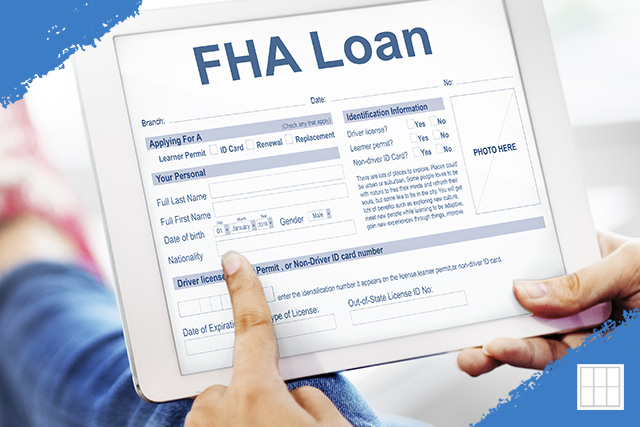Finding the best FHA lenders in Kansas City can feel overwhelming, especially if you're a…

How to Get a VA Home Loan: A Step-by-Step Guide for Veterans
For U.S. veterans, active-duty service members, and eligible surviving spouses, a VA home loan offers an incredible opportunity to achieve homeownership with favorable terms. Backed by the U.S. Department of Veterans Affairs (VA), this loan program eliminates the need for a down payment in most cases, requires no private mortgage insurance (PMI), and often comes with competitive interest rates. If you’re wondering how to get started, this comprehensive guide will walk you through the process step-by-step, ensuring you’re well-prepared to take advantage of this valuable benefit.
Step 1: Understand VA Home Loan Eligibility
The first step in securing a VA Home Loan is confirming your eligibility. The VA sets specific service requirements, which vary depending on when and how long you served. Generally, you may qualify if you meet one of these criteria:
- Served 90 consecutive days of active duty during wartime.
- Served 181 days of active duty during peacetime.
- Completed six years in the National Guard or Reserves.
- Are the surviving spouse of a service member who died in the line of duty or due to a service-related disability.
To verify your eligibility, you’ll need a Certificate of Eligibility (COE). You can apply for your COE through the VA’s official eBenefits portal at va.gov or request it through your lender, who can often obtain it on your behalf.
Step 2: Gather Required Documentation
Once you’ve confirmed eligibility, gather the necessary documents to streamline the loan application process. These typically include:
- Your COE (or the information needed for your lender to request it).
- Proof of income (e.g., pay stubs, tax returns, or W-2s).
- Bank statements and asset documentation.
- A valid government-issued ID.
- Details about your service history (if applying for the COE yourself).
Having these documents ready will help your lender assess your financial situation and move the process along quickly.
Step 3: Check Your Credit and Finances
While VA loans are more lenient than conventional loans, lenders still evaluate your creditworthiness. The VA doesn’t set a minimum credit score, but most lenders prefer a score of at least 620. Review your credit report for errors and address any outstanding debts to improve your chances of approval.
Next, assess your debt-to-income (DTI) ratio, which compares your monthly debt payments to your income. The VA recommends a DTI of 41% or lower, though some lenders may allow higher ratios with compensating factors like strong credit or savings.
To get a clearer picture of what you can afford, use a VA Mortgage Calculator. This tool helps estimate your monthly payments based on loan amount, interest rate, and term, giving you confidence as you begin house hunting.
Step 4: Find a VA-Approved Lender
The VA doesn’t issue loans directly; instead, it guarantees a portion of the loan provided by private lenders like banks, credit unions, or mortgage companies. Choose a lender experienced with VA loans to ensure a smooth process. Look for one that offers competitive VA mortgage rates and excellent customer service.
When selecting a lender, ask about their VA loan expertise, funding fees (a one-time cost that varies based on your down payment and whether it’s your first VA loan), and any additional fees. A reputable lender will guide you through the process and help you avoid pitfalls.
Step 5: Get Pre-Approved
Before shopping for a home, get pre-approved for a VA loan. Pre-approval involves submitting your financial information to a lender, who then provides a letter stating how much you’re eligible to borrow. This step shows sellers you’re a serious buyer and helps narrow your home search to properties within your budget.
During pre-approval, your lender will also review your COE, credit, and finances, setting the stage for a faster final approval once you find a home.
Step 6: Shop for Your Home
With pre-approval in hand, start searching for a home that meets your needs and fits VA guidelines. The VA requires properties to meet Minimum Property Requirements (MPRs), ensuring they’re safe, sanitary, and structurally sound. This includes standards for plumbing, electrical systems, and overall condition. Your real estate agent, ideally one familiar with VA loans, can help you identify qualifying homes.
Once you find a property, make an offer and include a VA loan contingency in the contract. This protects you if the home doesn’t appraise for the agreed-upon price or fails to meet VA standards.
Step 7: Complete the VA Appraisal and Underwriting
After your offer is accepted, your lender will order a VA appraisal. Conducted by a VA-approved appraiser, this step confirms the home’s value and ensures it meets MPRs. If issues arise, the seller may need to make repairs, or you can negotiate a solution.
Simultaneously, your lender will underwrite the loan, reviewing your application, the appraisal, and the property details. This process verifies that everything aligns with VA guidelines.
Step 8: Close on Your Home
Once underwriting is complete and the loan is approved, you’ll move to closing. Review the Closing Disclosure, which outlines your loan terms, monthly payment, and closing costs (including the VA funding fee, if applicable). At the closing table, sign the paperwork, pay any required costs, and receive the keys to your new home.
The VA funding fee, typically 1.25% to 3.3% of the loan amount, can be paid upfront or rolled into the loan. Some veterans, such as those with service-connected disabilities, may be exempt—check your eligibility with your lender or the VA.
Tips for a Smooth VA Loan Process
- Work with Experts: Partner with a lender and real estate agent who understand VA loans to avoid delays.
- Stay Organized: Keep your documents in order and respond promptly to lender requests.
- Monitor Rates: Keep an eye on VA mortgage rates to lock in a favorable deal.
- Ask Questions: Don’t hesitate to clarify terms or requirements with your lender or the VA.
Why Choose a VA Home Loan?
The VA home loan program stands out for its flexibility and benefits. With no down payment, no PMI, and competitive rates, it’s a powerful tool for veterans to build wealth through homeownership. Plus, the VA’s backing reduces lender risk, often leading to more favorable terms than conventional loans.
Final Thoughts
Securing a VA Home Loan is a rewarding process that honors your service with tangible benefits. By following these steps—confirming eligibility, preparing financially, and working with the right professionals—you’ll be well on your way to owning a home. Use tools like the VA Mortgage Calculator to plan ahead, and don’t hesitate to lean on resources like the VA’s official guidelines for support.
Ready to take the next step? Start by requesting your COE and connecting with a trusted lender today. Your dream home is within reach, and the VA loan program is here to make it happen.



